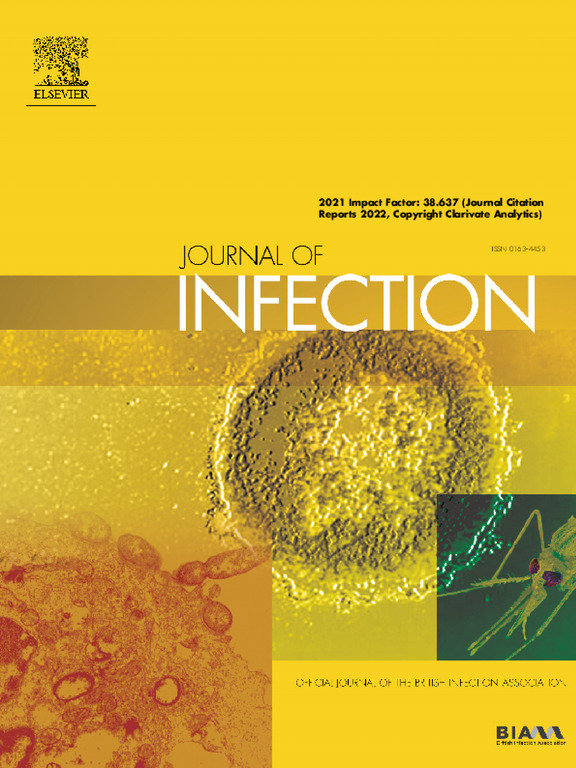Identification of lesion bioactivity in hepatic cystic echinococcosis using a transformer-based fusion model
IF 14.3
1区 医学
Q1 INFECTIOUS DISEASES
引用次数: 0
Abstract
Background
Differentiating whether hepatic cystic echinococcosis (HCE) lesions exhibit biological activity is essential for developing effective treatment plans. This study evaluates the performance of a Transformer-based fusion model in assessing HCE lesion activity.
Methods
This study analyzed CT images and clinical variables from 700 HCE patients across three hospitals from 2018 to 2023. Univariate and multivariate logistic regression analyses were conducted for the selection of clinical variables to construct a clinical model. Radiomics features were extracted from CT images using Pyradiomics to develop a radiomics model. Additionally, a 2D deep learning model and a 3D deep learning model were trained using the CT images. The fusion model was constructed using feature-level fusion, decision-level fusion, and a Transformer network architecture, allowing for the analysis of the discriminative ability and correlation among radiomics features, 2D deep learning features, and 3D deep learning features, while comparing the classification performance of the three multimodal fusion models.
Results
In comparison to radiomics and 2D deep learning features, the 3D deep learning features exhibited superior discriminative ability in identifying the biological activity of HCE lesions. The Transformer-based fusion model demonstrated the highest performance in both the internal validation set and the external validation set, achieving AUC values of 0.997 (0.992–1.000) and 0.944 (0.911–0.977), respectively, thereby outperforming both the feature-level and decision-level fusion models, and enabling precise differentiation of HCE lesion biological activity.
Conclusion
The Transformer multimodal fusion model integrates clinical features, radiomics features, and both 2D and 3D deep learning features, facilitating accurate differentiation of the biological activity of HCE lesions and exhibiting significant potential for clinical application.
基于变压器融合模型的肝囊性包虫病病变生物活性鉴定。
背景:区分肝囊性棘球蚴病(HCE)病变是否具有生物活性对于制定有效的治疗方案至关重要。本研究评估了基于 Transformer 的融合模型在预测 HCE 病变活性方面的性能:本研究分析了2018年至2023年三家医院700名HCE患者的CT图像和临床变量。对临床变量的选择进行了单变量和多变量逻辑回归分析,以构建临床模型。使用 Pyradiomics 从 CT 图像中提取放射组学特征,以建立放射组学模型。此外,还利用 CT 图像训练了二维深度学习模型和三维深度学习模型。融合模型的构建采用了特征级融合、决策级融合和Transformer网络架构,可以分析放射组学特征、二维深度学习特征和三维深度学习特征之间的判别能力和相关性,同时比较三种多模态融合模型的分类性能:结果:与放射学特征和二维深度学习特征相比,三维深度学习特征在识别 HCE 病变的生物活性方面表现出更优越的鉴别能力。基于Transformer的融合模型在测试集和外部验证集上都表现出了最高的性能,AUC值分别达到了0.997(0.992-1.000)和0.944(0.911-0.977),从而超越了特征级和决策级融合模型,实现了对HCE病变生物活性的精确区分:Transformer多模态融合模型整合了临床特征、放射学特征以及二维和三维深度学习特征,有助于准确区分HCE病变的生物活性,具有巨大的临床应用潜力。
本文章由计算机程序翻译,如有差异,请以英文原文为准。
求助全文
约1分钟内获得全文
求助全文
来源期刊

Journal of Infection
医学-传染病学
CiteScore
45.90
自引率
3.20%
发文量
475
审稿时长
16 days
期刊介绍:
The Journal of Infection publishes original papers on all aspects of infection - clinical, microbiological and epidemiological. The Journal seeks to bring together knowledge from all specialties involved in infection research and clinical practice, and present the best work in the ever-changing field of infection.
Each issue brings you Editorials that describe current or controversial topics of interest, high quality Reviews to keep you in touch with the latest developments in specific fields of interest, an Epidemiology section reporting studies in the hospital and the general community, and a lively correspondence section.
 求助内容:
求助内容: 应助结果提醒方式:
应助结果提醒方式:


